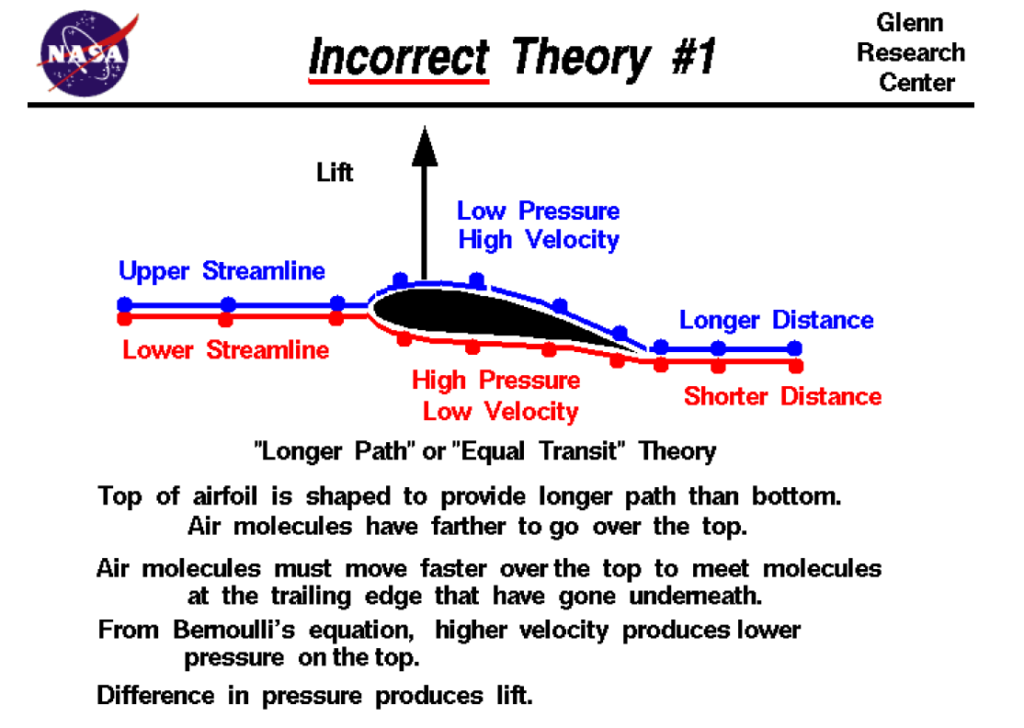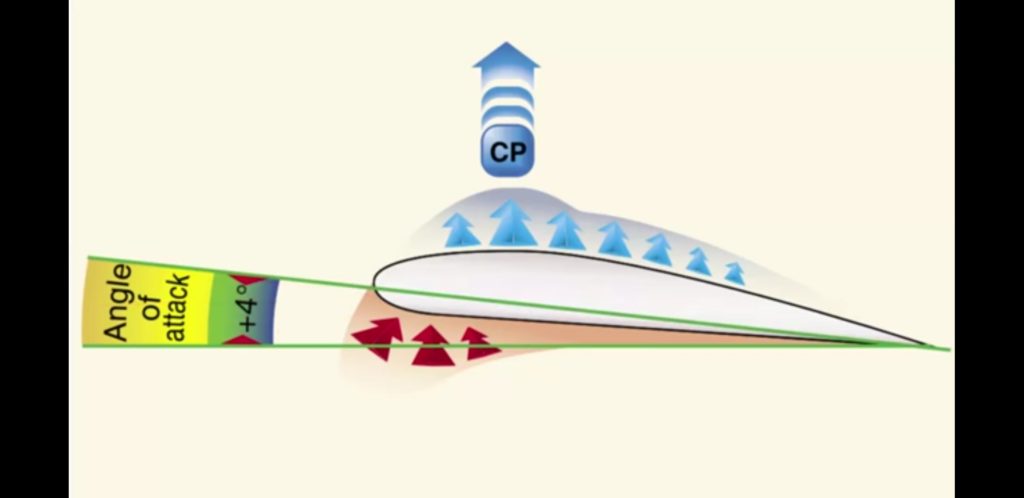Lift Theory
This is a reference guide to foil terms and lift theory. It is what I know and is not meant to be the definitive word. I am not a physicist nor an engineer. I will try and keep it simple. I will update it as more information comes to me.
There is a lot of literature on lift theory in wings and a very limited amount on hydrofoils. Planes are important to our society and therefore have garnered all the attention. Some of what happens in the air is similar to fluid dynamics but there are differences.
I was taught in school that wings worked by a pressure differential between the longer upper surface and the shorter lower surface. It seems logically correct except when you realize planes can fly upside down without a problem and paper airplanes fly just fine. This theory is “The Longer Path or Equal Transit Theory” Here is a visual from NASA on this:

This theory is valid but IS NOT even a small contributor to the lift characteristics of a wing
The lift of a foil is mainly dependent on the angle of attack of the front wing.
The greater the angle the more lift. Every one of us has experienced this when we put too much pressure on our front foot or not enough. We change the angle of attack dramatically and you crash. You have not changed the wing design, just the angle of attack. The problem that arises with hydrofoil design is that as you increase the angle of attack you also increase the drag of the wing. I define glide as the ratio of lift to efficiency. The term that others use is the lift to drag ratio. In fluid dynamics there is a sweet spot for the angle of attack and it is around 3-4 degrees of angle.

This range provides an optimal lift to drag(efficiency) ratio for the wing. Drag is also dependent on the wing shape, thickness, leading edge shape and total area. The wing camber does influence the lift, just not as much as one would think. The shape really affects the drag more than anything else. The thicker the wing the more drag it will produce. This is exaggerated more in water since it is much denser than air. A small increase in wing thickness leads to a higher drag which slows the wing down. You experience this with thick wings that are slow and thinner wings that are faster. Ok then why not make all wings thin? The answer is that they would flex and break. The forces are too great across the wing to make it paper thin and have an angle of attack that is proper. The area of the wing also influences the amount of lift in a significant way. The greater the area of the wing the more lift. Area can be increased or decreased by either changing the cord length, changing the wing width or both. The most common type of wing is a compromise between width and chord length. The extreme of design is a High aspect ratio wing. The width is increased while the chord length is decreased. This will give the same area as a longer chord/shorter width wing. Curve in the wing called dihedral or anhedral depending on which direction it goes is another factor in the wing flight characteristics. This helps with the wing stability and turning. The more arch in the wing the more stable it will feel but like all the other design components it must be within a certain parameter or it causes negative influences on performance. The key is to combine the thickness, wing design, area and angle of attack in a way to make the wing do what you want. Volume is another factor in wing performance. Two wings of the same width may have very different volumes. Volume is the Width x Chord x Camber in a simplistic form. Most wing manufactures do not tell you the volume, but this will give you an idea of whether the wing will float and how much drag it may exhibit. The more volume the more drag the wing will exhibit.
It is easy to see how complicated wing design is. One small change in a variable and the wing will act differently. I think of wing design as more of an art form at this point. It is similar to what surfboard design used to be. The advent of computer shaping has allowed for small incremental design changes that allow manufactures to see what that one variable will change. Wings are much harder to make and I believe the future will come when these small design changes can be done in a rapid fashion and allow riders to access how it affects the performance. The recent advent of better wave pools may allow this to progress even faster. If you take the wave variable out of the equation, then you can really see what the design change is affecting. Right now, I am just enjoying the art form that it has become. Who among us doesn’t stop and admire the wing shape and design? Knowing just a little technical information behind the art is just icing on the cake.
